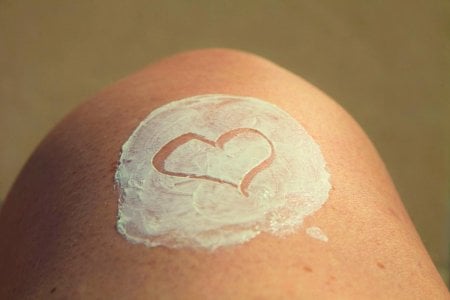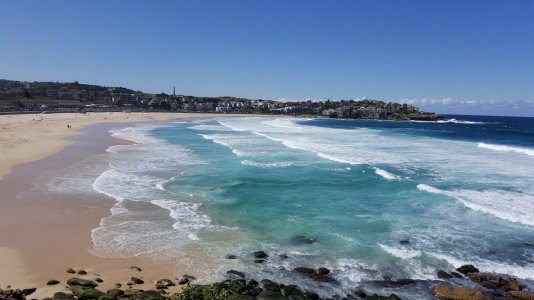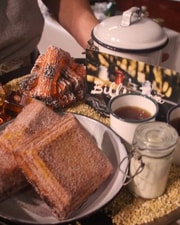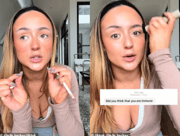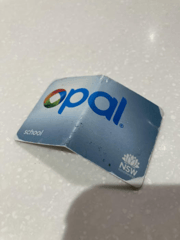Traveller’s serious sunscreen warning for summer tourists in Australia: ‘Throw out your sunscreen…’
We’re no strangers to our sun-kissed beaches, crystalline waters, and the landmarks we proudly call our own.
Yet, an often-overlooked danger lurks beneath our country’s breathtaking beauty: the relentless ultraviolet (UV) radiation.
True blue Aussies understand—our golden sun is a double-edged sword, providing warmth but demanding respect.
That’s why sun protection is important for every tourist visiting this summer.
But a word of caution: take more time to think about your sunscreen, as one American traveller learned the hard way.
Mary, originally from the US and exploring Australia and New Zealand, shared her scepticism towards non-Australian sun protection products.
The Melanoma Institute has stated that Australia records the world’s top melanoma rates, with a diagnosis every half hour and a death every six hours from the condition.
‘This is just your daily reminder that if you're travelling to Australia or New Zealand to throw out your sunscreen and buy one here,’ Mary shared.
‘Australia has some of the highest UV radiation and skin cancer rates in the world, and the requirements for sunscreen here are very strict.’
Cancer Council Australia advises daily sun protection whenever UV levels reach 3 or higher.
Melanoma is the top cancer in Australians aged 20 to 39, and half of those with advanced melanoma don’t benefit or eventually resist the latest immunotherapy methods.
Yet, a 2019 Skin Health Institute poll of 1,000 Australians showed that many in their 20s and 30s think they’re too young for a skin examination.
Using sunscreen lowers the chances of skin cancer and sunburn and combats the sun's aging effects.
The term SPF stands for ‘sun protection factor’, indicating the time it takes for skin with sunscreen to burn compared to skin without.
For instance, if sunscreen-covered skin burns in 300 seconds while uncovered skin takes only 10 seconds, the SPF is 30 (calculated as 300 ÷ 10).
A ‘+’ symbol on some SPF products indicates the protective rating exceeds the stated number.
Only SPF 50 products can use this, meaning SPF 50+ offers a robust protection level of 60 or even higher.
Protection standards may differ internationally, often with less strict regulations.
Pharmaceutical Expert Hannah English shared with Primer that Australia's severe UV levels and climate need its stringent sun protection norms, so it’s always safer to procure sunscreen locally.
More to Mary’s point, Hannah warned against using sunscreens made in the US that aren't available in Australia ‘because their UVA protection testing isn't as strict, you could be subject to more UVA radiation.’
Many tourists have relayed unsettling tales of sunburns while in Australia and New Zealand.
‘I was in the car with my mum for 15 minutes with darkest legal tint windows and got burnt,’ a woman said.
‘It’s important to be vigilant. You can reapply every hour and still get burnt here sometimes. Most people try their best to be sun smart, but it's very hard,’ another wrote.
‘I personally only buy 50+ SPF or invisible zinc sunscreen,’ one said.
‘I live in Australia, and I get sunburnt walking to my mailbox, and I'm not even joking,' a man shared.
‘Just don't leave the house.’

Members, how about you? When you travel internationally, do you rely on local sunscreens or bring your own from home? Share your experiences in the comments below!
Yet, an often-overlooked danger lurks beneath our country’s breathtaking beauty: the relentless ultraviolet (UV) radiation.
True blue Aussies understand—our golden sun is a double-edged sword, providing warmth but demanding respect.
That’s why sun protection is important for every tourist visiting this summer.
But a word of caution: take more time to think about your sunscreen, as one American traveller learned the hard way.
Mary, originally from the US and exploring Australia and New Zealand, shared her scepticism towards non-Australian sun protection products.
The Melanoma Institute has stated that Australia records the world’s top melanoma rates, with a diagnosis every half hour and a death every six hours from the condition.
‘This is just your daily reminder that if you're travelling to Australia or New Zealand to throw out your sunscreen and buy one here,’ Mary shared.
‘Australia has some of the highest UV radiation and skin cancer rates in the world, and the requirements for sunscreen here are very strict.’
Cancer Council Australia advises daily sun protection whenever UV levels reach 3 or higher.
Melanoma is the top cancer in Australians aged 20 to 39, and half of those with advanced melanoma don’t benefit or eventually resist the latest immunotherapy methods.
Yet, a 2019 Skin Health Institute poll of 1,000 Australians showed that many in their 20s and 30s think they’re too young for a skin examination.
Using sunscreen lowers the chances of skin cancer and sunburn and combats the sun's aging effects.
The term SPF stands for ‘sun protection factor’, indicating the time it takes for skin with sunscreen to burn compared to skin without.
For instance, if sunscreen-covered skin burns in 300 seconds while uncovered skin takes only 10 seconds, the SPF is 30 (calculated as 300 ÷ 10).
A ‘+’ symbol on some SPF products indicates the protective rating exceeds the stated number.
Only SPF 50 products can use this, meaning SPF 50+ offers a robust protection level of 60 or even higher.
Protection standards may differ internationally, often with less strict regulations.
Pharmaceutical Expert Hannah English shared with Primer that Australia's severe UV levels and climate need its stringent sun protection norms, so it’s always safer to procure sunscreen locally.
More to Mary’s point, Hannah warned against using sunscreens made in the US that aren't available in Australia ‘because their UVA protection testing isn't as strict, you could be subject to more UVA radiation.’
Many tourists have relayed unsettling tales of sunburns while in Australia and New Zealand.
‘I was in the car with my mum for 15 minutes with darkest legal tint windows and got burnt,’ a woman said.
‘It’s important to be vigilant. You can reapply every hour and still get burnt here sometimes. Most people try their best to be sun smart, but it's very hard,’ another wrote.
‘I personally only buy 50+ SPF or invisible zinc sunscreen,’ one said.
‘I live in Australia, and I get sunburnt walking to my mailbox, and I'm not even joking,' a man shared.
‘Just don't leave the house.’
Key Takeaways
- Mary, a U.S. tourist, advises using local Australian sunscreen due to high UV levels.
- Australia has the world's highest melanoma rates, with a diagnosis every 30 minutes.
- Cancer Council Australia suggests daily protection at UV levels of 3 or above.
- Many tourists experience severe sunburn in Australia, underscoring the need for strong protection.

